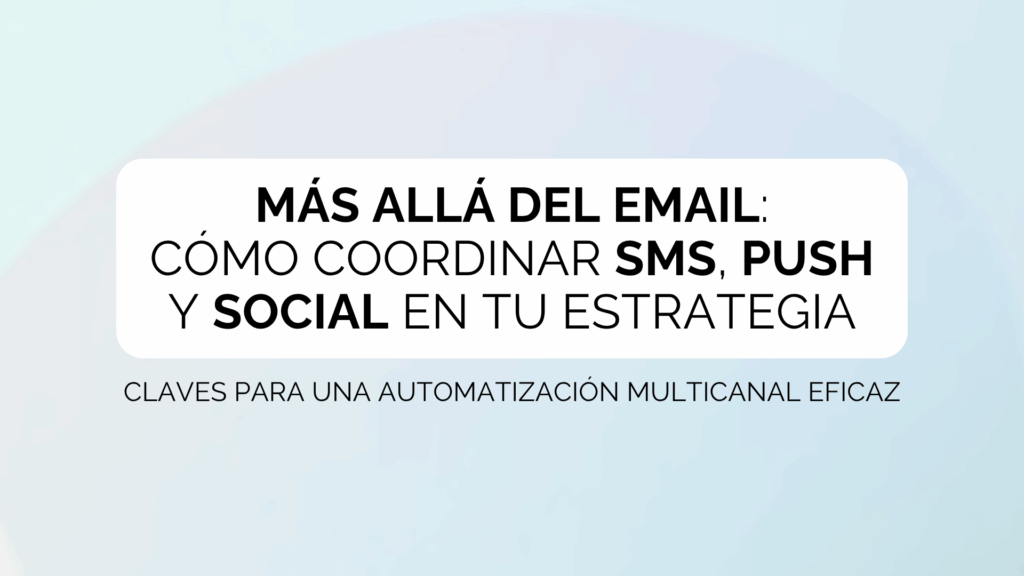Beyond email: how to coordinate SMS, push and social into your strategy

In an increasingly fragmented digital environment, users are no longer limited to a single channel to interact with brands. The challenge for marketing teams is no longer to be present on multiple platforms, but to be present on multiple platforms. synchronise these touch points to deliver a seamless and coherent experience. This is where the multi-channel automationwhich allows you to coordinate email, SMS, push notifications and social media in a single strategy.
In this post, we will see how to coordinate email, SMS, push and social in a multichannel automation strategy. In addition, we show you the keys to synchronisation, the role of each channel and the best practices to maximise impact without saturating the user.
Why multi-channel automation?
- Brand consistencyEach channel transmits the same message, adapted to its own language.
- Greater reachnot all users open emails, but they may respond to an SMS or interact with a post on social media.
- Advanced customisationThe combination of data from different channels enhances the segmentation and relevance of the message.
- EfficiencyAutomated flows avoid duplication of effort and optimise resources.
The importance of coordination and synchronisation
Automating does not mean duplicating messages on several channels, but rather linking interactions.
- A abandoned trolley can start with an email, be reinforced with an SMS after a few hours and culminate with a personalised social announcement.
- A loyalty campaign can be nurtured by regular newsletters, push reminders and exclusive experiences shared on social media.
- The key is to define the role of each channel within the customer journey.
Best practices in multi-channel automation
- Define a central orchestrator
Tools such as Salesforce Marketing Cloud, Emarsys, Klaviyo or Iterable allow you to manage multichannel campaigns from one place, avoiding isolated messages. - Tailor the message to the channel
An email allows storytelling with images and call-to-actions; an SMS must be direct and brief; a push notification generates immediacy; and social media reinforces community and branding. - Establish frequency and priority rules
Avoid saturation: if a user responds to the first impact in one channel, it is not necessary for them to receive the same message in other channels. - Measure and optimise in real time
Automation should be flexible: analyse open rates, clicks, conversions and adapt the strategy based on insights. - Integrate data to improve the experience
The unification of the customer profile is essential for multi-channel communication to be relevant and not repetitive.
In short, multichannel automation is not about "being everywhere", but about being at the right time and on the right channel with the right message. By coordinating email, SMS, push and social, brands achieve more complete user experiences, increase conversion and strengthen customer relationships.